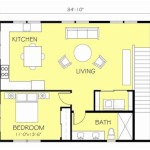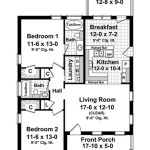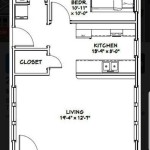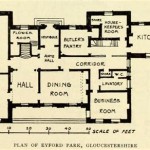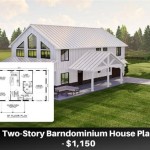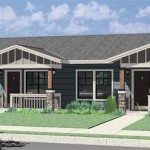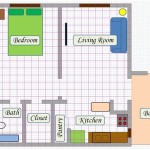3000 Square Feet House Plans: A Comprehensive Guide
Designing a home, particularly one around 3000 square feet, is a significant undertaking. This size offers a comfortable balance between spacious living and manageable maintenance. Selecting the right plan requires careful consideration of lifestyle, budget, site conditions, and future needs. This article delves into the key aspects involved in choosing and customizing 3000 square feet house plans, providing insights to aid in informed decision-making.
Understanding the Requirements and Constraints
Before exploring specific house plans, a thorough assessment of personal requirements and potential constraints is essential. This initial step forms the foundation for narrowing down the vast array of available options.
Firstly, consider the needs of all occupants. How many bedrooms and bathrooms are necessary? Are there specific requirements, such as a home office, a playroom, or accommodation for elderly relatives? Understanding the daily routines and preferences of each family member is crucial to ensure the house plan adequately caters to their individual needs.
Secondly, evaluate the property itself. The size, shape, and orientation of the lot significantly influence the type of house plan that is suitable. Consider setbacks, easements, and any local building regulations that may restrict the building envelope. The topography of the land also plays a vital role. A sloping site, for instance, may require a split-level design or necessitate extensive excavation, impacting both the cost and the complexity of the project. The orientation of the lot regarding sun exposure should be considered to optimize natural light and energy efficiency. South-facing windows, for example, can maximize solar gain during winter, while strategically placed shading can minimize overheating in summer.
Thirdly, establish a realistic budget. The cost of building a house is influenced by various factors, including the design complexity, the quality of materials, and the labor costs in the area. It is prudent to allocate funds not only for construction but also for site preparation, landscaping, permits, and contingency expenses. Obtaining multiple quotes from reputable builders is recommended to gain a more accurate understanding of the overall project cost.
Finally, consider future needs. A 3000 square feet house is a significant investment, intended to serve the occupants for many years to come. Think about potential life changes, such as the growth of the family, changes in lifestyle, or the need for accessibility features as occupants age. Choosing a plan that allows for future expansion or adaptation can ensure the house remains suitable for the long term.
Exploring Different House Plan Styles and Layouts
Once the preliminary groundwork is laid, it is time to explore the diverse range of house plan styles and layouts available for a 3000 square feet home. Each style offers its unique aesthetic appeal and functional characteristics.
Colonial-style homes are characterized by their symmetrical facades, formal living spaces, and often feature a central staircase. They typically have a traditional feel and are well-suited for those who appreciate classic architectural details. Ranch-style homes, on the other hand, are typically single-story and emphasize horizontal lines. They are practical for elderly individuals or those with mobility issues, as they eliminate the need for stairs. Ranch homes often feature open floor plans and large windows, promoting a sense of spaciousness and connection to the outdoors.
Two-story homes are a popular choice for 3000 square feet designs, as they efficiently utilize vertical space. They offer clear separation between living areas and bedrooms, providing increased privacy. Two-story homes can be designed in various styles, ranging from traditional to contemporary. Contemporary house plans embrace clean lines, minimalist aesthetics, and an emphasis on natural light. They often incorporate open floor plans, large windows, and sustainable building materials. They are well-suited for those who appreciate modern design and energy efficiency.
Beyond the overall style, the layout of the house plan is just as crucial. Open floor plans, which combine the living room, dining room, and kitchen into a single large space, are increasingly popular. They promote social interaction and create a sense of spaciousness. However, they may lack the privacy afforded by traditional layouts. Consider the flow of traffic within the house. How easily can occupants move between different areas? Are the bedrooms located in a quiet zone, away from the main living areas? Is there sufficient storage space throughout the house? A well-designed layout maximizes functionality and enhances the overall living experience.
The number of bedrooms and bathrooms is obviously a critical determinant. A 3000 square feet house can comfortably accommodate three to five bedrooms, depending on the desired size of each room and the overall layout. The number of bathrooms should be adequate for the number of occupants, with consideration given to the location of bathrooms relative to the bedrooms and living areas. A master suite, comprising a bedroom, bathroom, and walk-in closet, is a common feature in larger homes.
The design of the kitchen is another important consideration. Is a formal dining room required, or is an informal dining area sufficient? Is a large island or peninsula desired for food preparation and casual dining? Is there adequate counter space and storage? The kitchen should be designed to be both functional and aesthetically pleasing.
Finally, consider the outdoor spaces. A 3000 square feet house plan can incorporate a variety of outdoor features, such as a patio, deck, porch, or garden. These spaces can extend the living area of the house and provide opportunities for relaxation and recreation. The design of the outdoor spaces should complement the overall style of the house and consider the climate and surroundings.
Customizing and Adapting Existing Plans
While pre-designed house plans offer a cost-effective and convenient starting point, they may not perfectly match individual needs and preferences. Customizing and adapting existing plans is a common practice, allowing homeowners to create a house that is truly unique and tailored to their specific requirements.
Minor modifications, such as changing the size or location of windows and doors, are relatively straightforward. These adjustments can significantly impact the amount of natural light entering the house and the overall aesthetic appeal. Altering the layout of interior walls is also a common customization. This can involve combining or separating rooms, adding or removing walls, or changing the flow of traffic within the house. However, it is important to consult with a structural engineer to ensure that any changes do not compromise the structural integrity of the building.
More significant customizations may involve adding or removing entire rooms, changing the roofline, or altering the facade of the house. These modifications require more extensive planning and may involve higher costs. However, they can result in a house that is perfectly suited to the homeowner's needs and desires.
When customizing a house plan, it is essential to work closely with an architect or designer. They can provide expert advice on the feasibility of different modifications, ensure that the changes comply with local building codes, and help to create a cohesive and aesthetically pleasing design. The customization process should begin with a clear understanding of the homeowner's needs and priorities. The architect or designer will then work with the homeowner to develop a detailed plan that incorporates all of the desired modifications.
Consider modifications that increase energy efficiency. Adding insulation, upgrading to energy-efficient windows and doors, and installing a solar panel system can significantly reduce energy consumption and lower utility bills. Incorporating sustainable building materials and practices can further enhance the environmental friendliness of the house.
Accessibility is another important consideration, particularly for those planning to age in place. Incorporating features such as wider doorways, ramps, grab bars, and accessible bathrooms can make the house more comfortable and convenient for individuals with mobility limitations. These modifications can also increase the resale value of the house.
Finally, ensure that all modifications are properly documented and approved by the relevant authorities. Obtaining building permits and adhering to local building codes is essential to ensure the safety and legality of the construction project.
In conclusion, selecting a 3000 square feet house plan involves a multi-faceted approach. Starting with a clear understanding of requirements, exploring different styles and layouts, and considering the possibilities of customization are crucial steps in the process. Consulting with professionals such as architects, designers, and builders is highly recommended to ensure that the final result is a home that is both functional and aesthetically pleasing, meeting the needs of the occupants for years to come.

3 000 Square Foot House Plans Houseplans Blog Com

3 000 Square Foot House Plans Houseplans Blog Com

List Of 3000 To 3500 Sq Ft Modern Home Plan And Design With 4 Bedroom House Plans

3 000 Square Foot House Plans Houseplans Blog Com

List Of 3000 To 3500 Sq Ft Modern Home Plan And Design With 4 Bedroom House Plans

House Plan 91110 European Style With 3000 Sq Ft 4 Bed 3 Bath
Country Ranch House Plan 3 5 Bedrm Bath 3000 Sq Ft 141 1005

3 Bed 3000 Square Foot Contemporary Craftsman Home Plan With Covered Lanai 33248zr Architectural Designs House Plans

3 000 Square Foot House Plans Houseplans Blog Com

Is It Possible To Build A 1 Bhk Home In 3000 Square Feet

